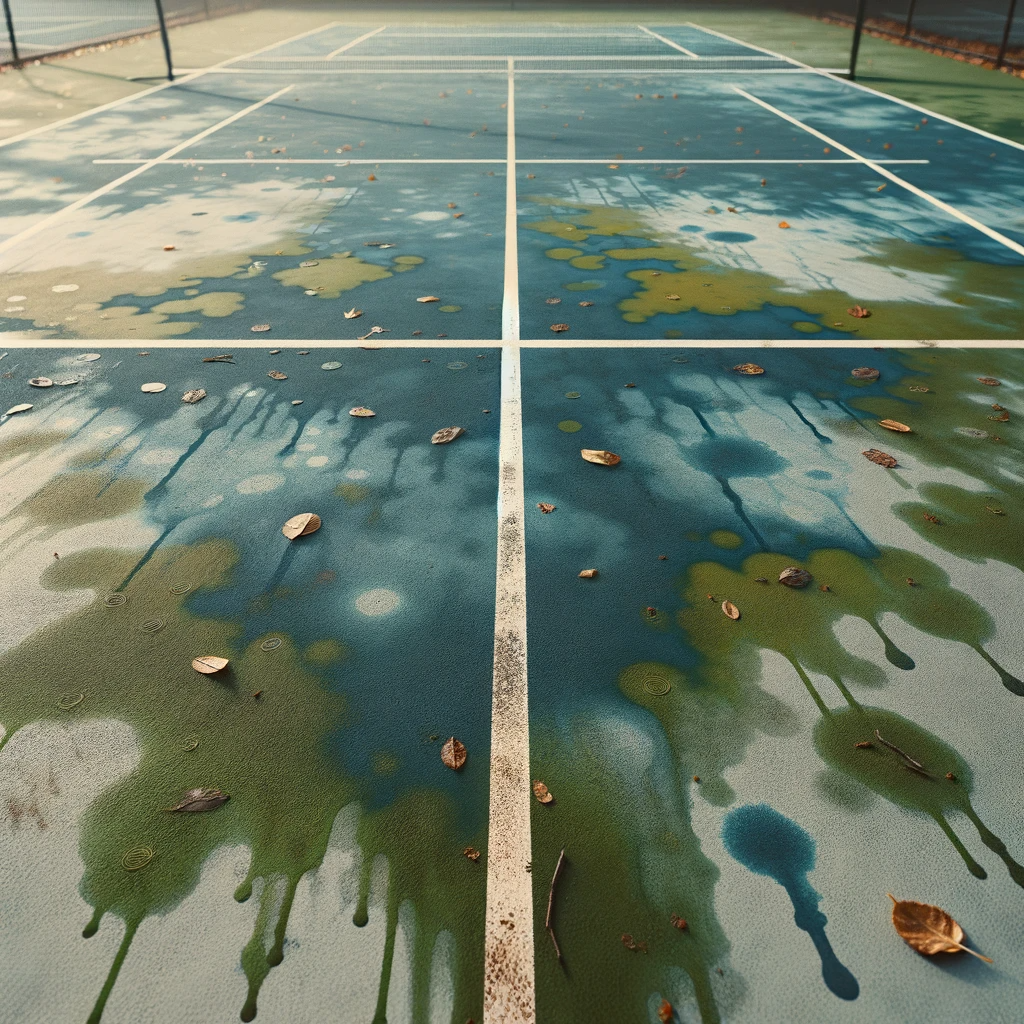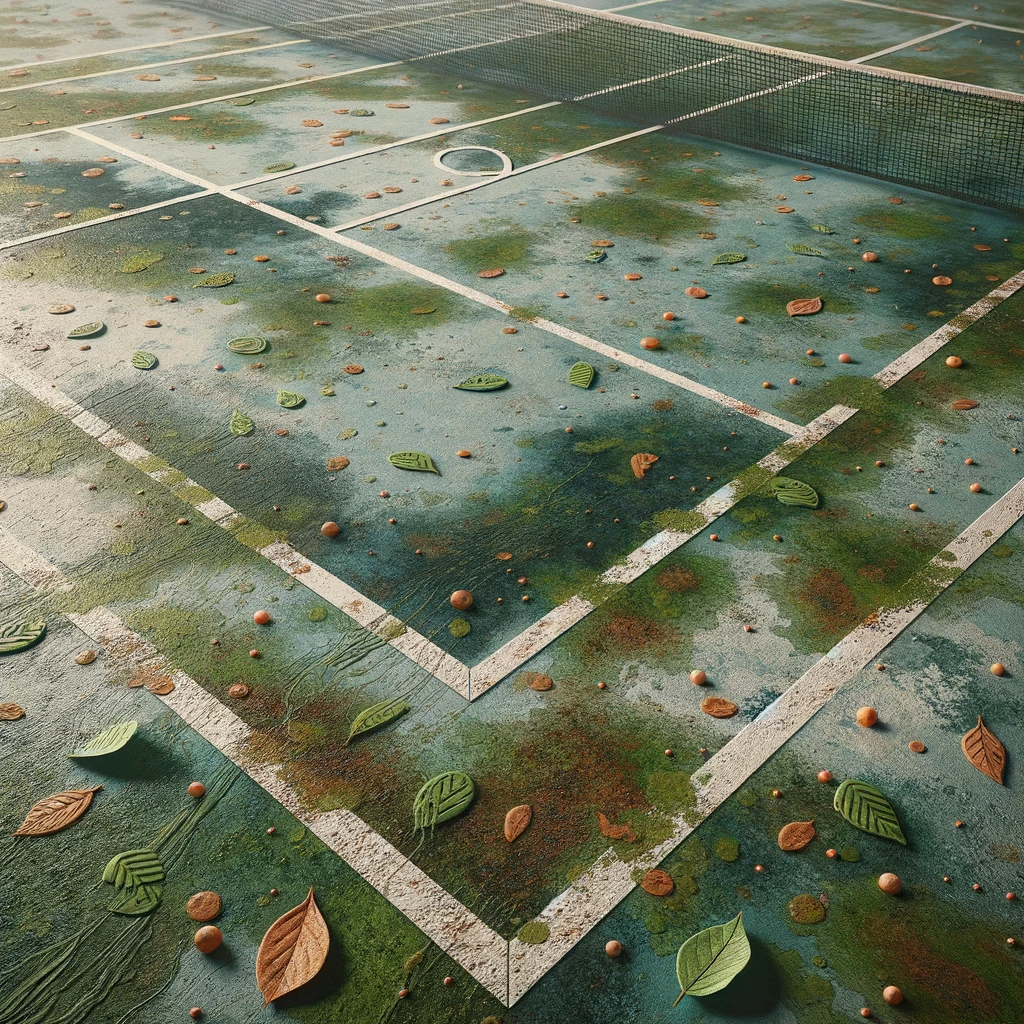Pickleball is one of the fastest growing sports in America. As more and more people take up pickleball, demand for pickleball courts is booming. Both public parks and recreation facilities and private homes and clubs are installing pickleball courts to meet this demand.
One key consideration when building a new pickleball court or refurbishing an existing one is selecting the right court coating. The coating applied to the court surface has a major impact on playability, safety, and longevity. An ideal coating provides the right blend of traction and smoothness, while also standing up to heavy use and outdoor weathering. However, some coatings perform better than others when faced with challenging climate conditions.
How Do Temperature Extremes Impact Court Coatings?
Outdoor pickleball courts must withstand both very high and very low temperatures depending on the climate. These temperature extremes can degrade court coatings prematurely if the materials are not properly formulated.
Extreme Heat
In areas with extremely hot summers, such as the Southwest United States, court coatings are subjected to intense ultraviolet radiation from the sun. UV exposure causes oxidation, which degrades the binder chemicals in the coating. This makes the coating lose cohesion and start to break down.
Prolonged high heat also causes coatings to soften and expand. With repeated expansion and contraction as temperatures fluctuate, coatings can crack or peel away from the court surface. Blisters may form under the coating as trapped moisture tries to escape.
According to industrial coating experts, surface temperatures above 140°F (60°C) accelerate coating degradation. Routinely hot days above 100°F (38°C) will also reduce coating lifespan.
Extreme Cold
Frigid temperatures have different detrimental effects on court coatings. Very cold conditions cause coatings to contract rapidly. When a coating layer shrinks too quickly, it pulls away from the layer below, resulting in cracks and delamination.
Low temperatures also make coatings more brittle and prone to chipping or abrasion damage from foot traffic and sliding play. In parts of the country with regular winter freezes, icy buildup on the court can pry up edges of the coating upon thawing.
Mitigating Temperature Effects
Choosing coatings formulated for temperature resistance helps minimize degradation. Acrylic resins tend to withstand heat and sunlight exposure better than other binders. Urethanes offer good cold temperature flexibility.
Proper surface preparation and application timing also helps coatings withstand temperature swings. Avoid applying coatings at temperature extremes or when very hot or cold conditions are forecast shortly after application. Allowing the coating to fully cure before exposing it to temperature cycling improves durability.
Regular maintenance helps optimize coating lifespan. Promptly patching any cracks or damage prevents further deterioration. Periodic cleaning removes dirt buildup that can hold moisture against the coating. Applying fresh coating layers as needed renews UV and water protection.

- Where Can I Play Pickleball in San Diego
- Cost Of Installing A Pickleball Court in 2024
- How to Find the Best Pickleball Courts Near Me?
How Does Moisture Impact Court Coatings?
Moisture in the form of rain, humidity, condensation, and groundwater affects court coatings too. Water causes swelling, blistering, loss of adhesion, and makes coatings more prone to abrasion damage.
Rain
Frequent heavy rainstorms subject pickleball court coatings to moisture intrusion and puddling water. Ponding water softens coatings and allows chemicals to leach out. Moving water also erodes the coating surface through hydraulic action.
Over time, this repetitive wetting and drying causes acrylic coatings to lose elasticity. The coats become brittle and begin flaking or peeling off the court. With small cracks present, moisture seeps underneath and deteriorates bond strength.
Humidity
Even in the absence of rain, humidity introduces moisture that impacts coatings. According to professional house painters, high relative humidity above 70% impedes moisture evaporation from paints and coatings. This delays curing and causes softness or blistering.
Humidity hastens oxidation and hydrolysis reactions that break down coatings from the inside. Without fully curing, coatings never achieve maximum hardness and water resistance.
Condensation
Temperature swings between hot days and cool nights leads to condensation forming on the court surface, like sweat on a cold beverage glass. This condensation adds more moisture exposure that deteriorates court coatings. The moisture gets trapped underneath the coating layers rather than evaporating completely.
Groundwater
Poor drainage under and around the court structure also exposes coatings to excess subsurface moisture. Hydrostatic pressure forces this groundwater to migrate through small concrete pores and cracks. It then pools and becomes trapped between coating layers.
This moisture causes visible coating swelling and damage at weak points in the court surface. Blisters bubble up where water has infiltrated the coating bond line. Small cracks from ground movement channel water straight to the coating layers.
Minimizing Moisture Effects
Applying moisture-resistant coatings specially engineered for exterior use improves durability. Urethane coats tend to resist water better than acrylic options. Multilayer systems with a moisture barrier primer underneath the color coats also protect against moisture intrusion.
Proper slope, drainage, crack repair, and vapor barriers during court construction prevent standing water and groundwater damage. Overlapping coating edges directs water away from weak perimeter joints.
Regular maintenance helps optimize coating lifespan. Promptly patching any cracks or blisters keeps moisture out of the coating layers. Periodic pressure washing prevents buildup of dirt, leaves, pollen, and other debris that holds moisture on the coating surface.
How Do Pickleball Court Coatings Protect Against Weathering?
Weather-resistant pickleball court coatings provide vital protection from the elements to maximize the usable life of the court surface. Here are some key protective benefits quality coatings offer:
UV Protection
High-performance coatings formulated for exterior use include UV-absorbing chemicals to prevent radiation degradation. This UV protection retains coating flexibility, hardness, and color.
Water Resistance
Waterproof coatings prevent moisture intrusion into the court slab and coating layers. This maintains good adhesion and stops blistering or swelling.
Thermal Stability
Temperature-resistant coatings withstand expansion and contraction stresses from heat cycles. This prevents cracks, delamination, and abrasion damage.
Crack Bridging
Flexible coatings stretch and bend to bridge over any cracks from ground settling or concrete shrinkage. This stops water and debris intrusion into cracks to prevent worsening.
Renewable Protection
Coatings can be reapplied after several years of use to renew UV, water, and abrasion resistance. This maintains quality playability longer before a full court resurfacing is needed.
Abrasion Resistance
Though coatings are flexible, they also maintain good hardness to resist scuffing and wear from constant foot traffic. This retains consistent ball bounce and play predictability.
Slip Resistance
Textured coatings provide just the right balance of traction and smoothness needed for safe play. Players gain solid footing with controlled slides.

- 17 Pickleball Court Etiquettes You Should Follow in 2023
- How Much Paint Do I Need for a Pickleball Court?
- How Much Does a Pickleball Court Cost? A Detailed Look at Traditional, Synthetic, and VersaCourt Prices
Best Practices for Maximizing Coating Performance
Follow these best practices to help your pickleball court coating provide maximum protection for the court surface:
- Choose a coating formulated especially for exterior sports courts, not standard paints. Look for urethane or acrylic-based coats with UV stabilizers and silicone additives for water beading.
- Prepare the concrete surface properly before coating. Repair cracks, level rough spots, and etch the slab to enable a strong coating bond.
- Apply coatings during moderate temperatures of 50-90°F (10-32°C) and low humidity per manufacturer instructions.
- Allow each coating layer to fully cure before adding the next. Curing times vary by product from 2-48 hours.
- Maintain proper drainage for the court area to prevent subsurface moisture issues.
- Inspect the courts regularly and promptly fix any damaged spots, blisters, or delaminated areas.
- Clean court surfaces periodically to prevent buildup of pollen, debris, and dirt that holds moisture.
- Consider reapplying the coatings after 2-6 years of use to renew weather protection before major restoration is needed.
With the right coating system and careful preparation, your pickleball courts can provide many years of playability in any climate. Consult a reputable sport court contractor to pick the best coating for your conditions. Proper installation, curing, and maintenance will maximize performance and resistance to sun, rain, heat, cold, and wear and tear. Maintaining quality court coatings helps safeguard your investment in building pickleball facilities to handle the sport’s rapidly growing popularity.
Resources:
- https://www.homepainterstoronto.com/2013/04/03/the-effects-of-weather-on-paint/
- https://www.morsportsgroup.com/pickleball-court-resurfacing
- https://www.performance-painting.com/how-weather-conditions-impact-industrial-protective-coatings/
- https://www.reference.com/world-view/fastest-growing-sport-america-c39a20469c5c78e5
- https://theracketlife.com/how-often-should-a-pickleball-court-be-resurfaced/
- https://www.utahcourtsurfacing.com/best-temperatures-for-applying-court-surfaces/
- Does LA Fitness Have Pickleball Courts? We Called 50+ Locations To Find Out
- How Much Does It Cost to Build a Pickleball Court
- Pickleball Court with Concrete Finish (Construction Guide)
- What Are Good Ways To Maintain or Repair a Backyard Pickleball Court Surface Over Time?
- Pickleball Court Construction & Resurfacing: How to Build and Maintain a High-Quality Court
- Pickleball Court vs Tennis Court: 7 Key Differences You Need To Know
- Where Can I Play Pickleball in Edmonton? Best Places Pickleball Edmonton
- Where Can I Play Pickleball in Vancouver Wa
- How Long Is Pickleball Net?
- Where Can I Play Pickleball in NJ
- Do They Have Pickleball in Portugal?
- How Much Does A Pickleball Set Cost?
- Can pickleball revive Santa Monica’s struggling Third Street Promenade?
- Can You Play Pickleball on Clay Courts?
- Can You Play Pickleball with 3 Players? Unleash the 3 Player Pickleball Revolution
- How Many Pickleball Courts Are There in The Villages?
- Pickleball Explodes Onto National Stage With Goodyear Blimp Coverage
- Where to Buy Pickleball Paddles?
- Can You Take a Pickleball Paddle on a Plane? Tips and Guidelines for Traveling with Your Paddle
- Bringing Pickleball Joy to Palatka: A Sporty Partnership Blooms
- Can You Play Pickleball in the Rain
- How Old Is Lee Whitwell Pickleball
